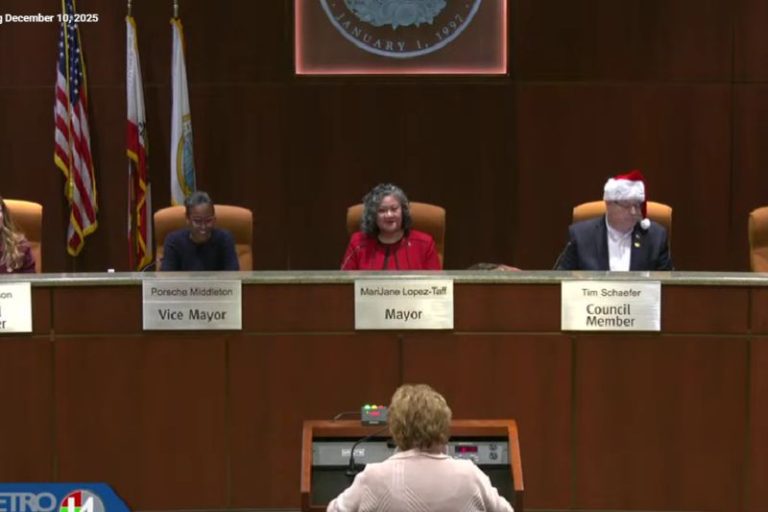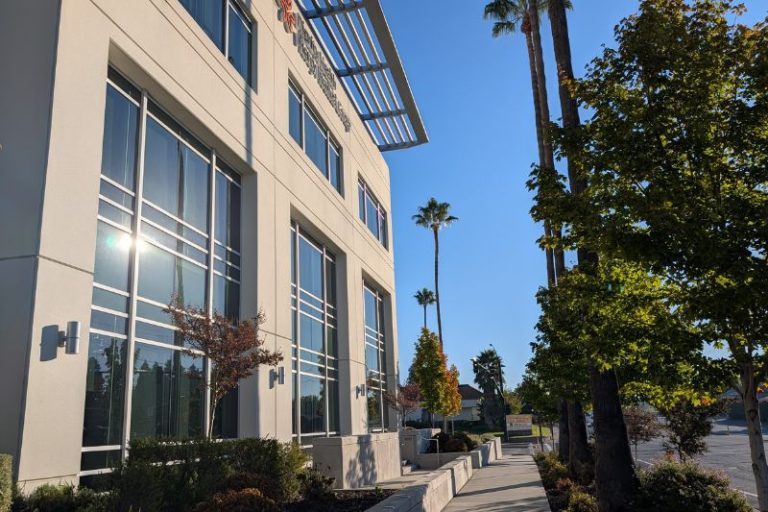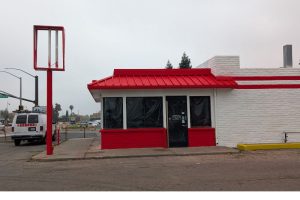
By Mike Hazlip—
Freshman Citrus Heights Councilmember Tim Schaefer during a community presentation on Monday opened up about what it’s been like to serve on the council and also fielded questions on a range of issues, from an upcoming double-digit rate increase, to plans for Sunrise Mall and problems with local schools.
Schaefer, who is the newest member of the five-member Citrus Heights City Council, won election last year after previous unsuccessful bids for a seat on the council in 2014 and 2018. He told attendees on Monday that his fiscal positions as well as his opposition to the city’s Measure M sales tax proposal last year and his prior opposition to building a new City Hall made him not feel welcomed on the council.
“When I was elected to council, let’s just say I didn’t get the warmest welcome. It was pretty cold in general. Very little interaction, not congratulatory,” he said.
Schaefer later on in the meeting said his role on the council is not to be friends with city staff, and cautioned that he believes other council members are “too close to staff, and they’ve lost their objectivity.”
“It’s great to be friendly, it’s great to get along,” said Schaefer. “(But) my role is oversight. It’s my job to maintain a distance that allows me to objectively decide ‘This is what I think is best for the city.’”
Garbage rates
The councilman described himself as “very fiscally hawkish,” but said one unavoidable cost increase residents will see next year is related to the passage of AB1383, a new state law mandating the collection of bio waste. Complying with the bill will mean moving to weekly pickups for organic waste, Schaefer said.
The added waste collection pickups means in January residents will see a 3% increase in their bill, followed by a 27% increase in July 2022, he said. The new law assesses fines on cities for non-compliance.
Schaefer said residents can help reduce their costs by opting for a smaller garbage bin and eliminating a second green bin for those who currently have two green bins. He also said the city is in the process of preparing an awareness campaign to notify residents of the upcoming changes.
City manager
Answering questions about the city’s search for a new city manager, Schaefer said he hopes the change will bring an opportunity to trim the city’s budget with cuts to the city manager’s salary.
With a total city employee workforce of 246, Schaefer said the city manager’s salary is out of step with surrounding cities like Roseville and Rancho Cordova.
“The city as an organization is relatively small, and the pay for the city manager should be commensurate with that,” he said. “We shouldn’t be paying along the same lines as Roseville that has a lot more employees.”
According to data posted at publicpay.ca.gov, Roseville last year paid its city manager a total of $336,831 in wages and benefits, while Citrus Heights paid its city manager $363,498. The data also shows Roseville has more than 2,000 city employees, including its own fire department and electric utility service, while Citrus Heights has more limited services.
Responding to a related question, Schaefer said he was “absolutely” concerned about paying enough to attract quality candidates, but indicated the most recent salary and benefits package was more than needed.
Sunrise Mall
Schaefer also addressed redevelopment plans for Sunrise Mall, calling the city’s recently released plan “phenomenal.” He said the city’s effort to complete an extensive Environmental Impact Review (EIR) has eliminated much of the “red tape” that can stall development projects.
Despite the plans however, Schaefer clarified the mall is privately owned and he remains skeptical of the mall’s majority owner’s intentions. However, he said: “I think ultimately we’ll come to a resolution and I think we’ll come to a resolution relatively soon, within the next couple of years.”
Related: City releases 289-page draft plan to transform Sunrise Mall
The mall’s 289-page Specific Plan, which is still a draft that must be approved by the City Council later this year, calls for entertainment, residential, office space, restaurants, and other uses on the nearly 100-acre Sunrise Mall property.
Schaefer said the city’s plan for Sunrise Mall establishes “guiderails” for development, meaning things like gas stations and fast food uses will not be allowed. “We want the mall to be a destination, we want people to come to Citrus Heights… and keep the community vibrant.”
Schaefer said this means attracting families with young children in the area: “Those are the people we need to keep the community vibrant.”
Schools
Addressing a related question about schools, Schaefer commented favorably about splitting the San Juan Unified School District into seven electoral districts, to help ensure representation on the school board from Citrus Heights residents.
Schaefer said the city has “some of the lowest-performing schools in the district” and hinted at creating a new Citrus Heights School District even if the current school board shifts to a seven-member model.
The day following Schaefer’s presentation, the San Juan Unified School District’s board voted in favor of transitioning to a seven-member model, which includes one dedicated board position for a Citrus Heights resident, and the possibility of another resident being elected to a second seat that is shared with Orangevale. The board’s decision is awaiting final approval from a separate county committee on Aug. 5, and also requires approval from a state board.
Related: SJUSD board votes to adopt 7-trustee map, with new Citrus Heights seat
Schaefer’s presentation was made during the July 26 monthly meeting of the Sunrise Old Auburn Road neighborhood association, which was held at the Sylvan Community Center on Sylvan Road. The association is one of nine different neighborhood associations in the city, each representing residents in different parts of the city.










